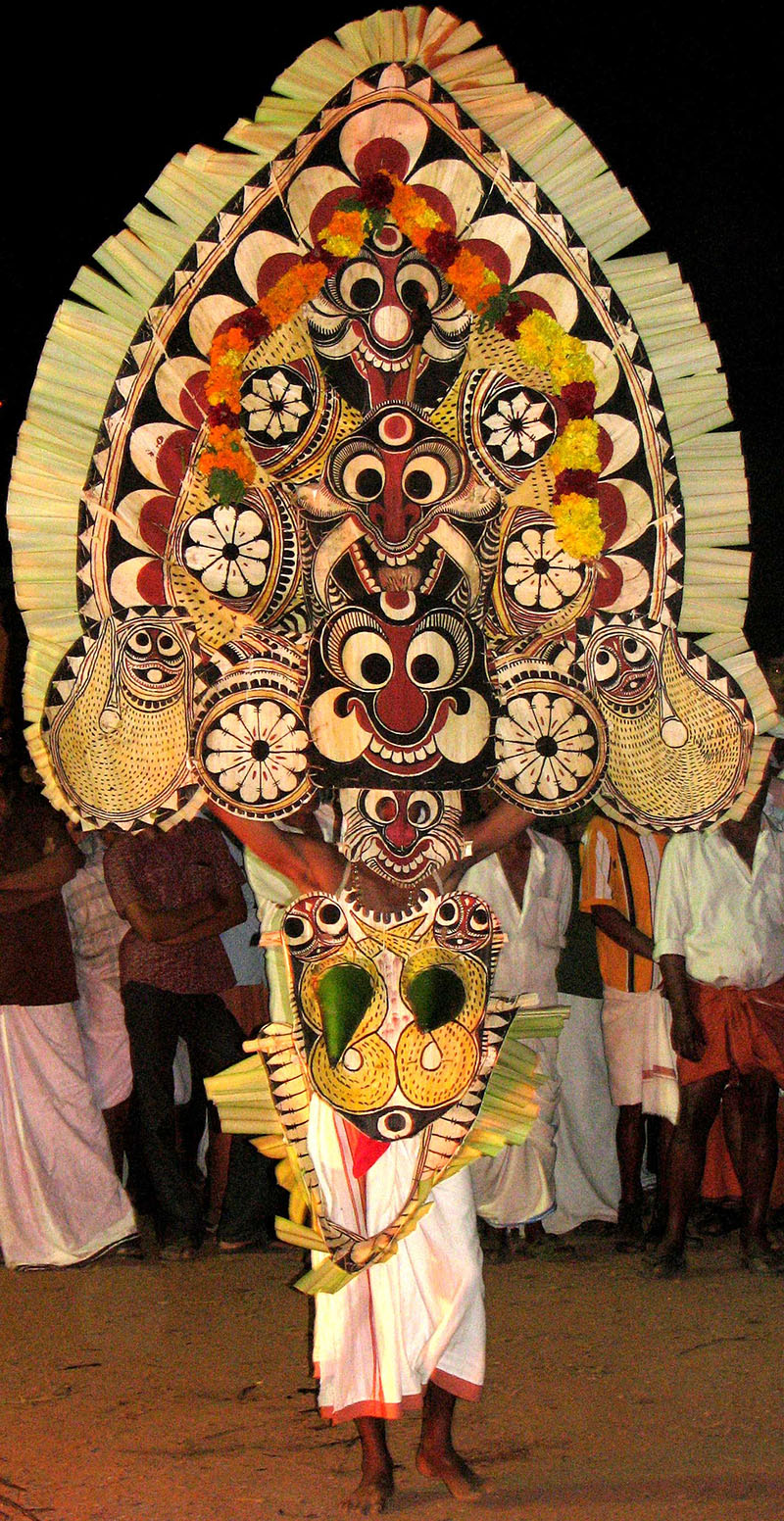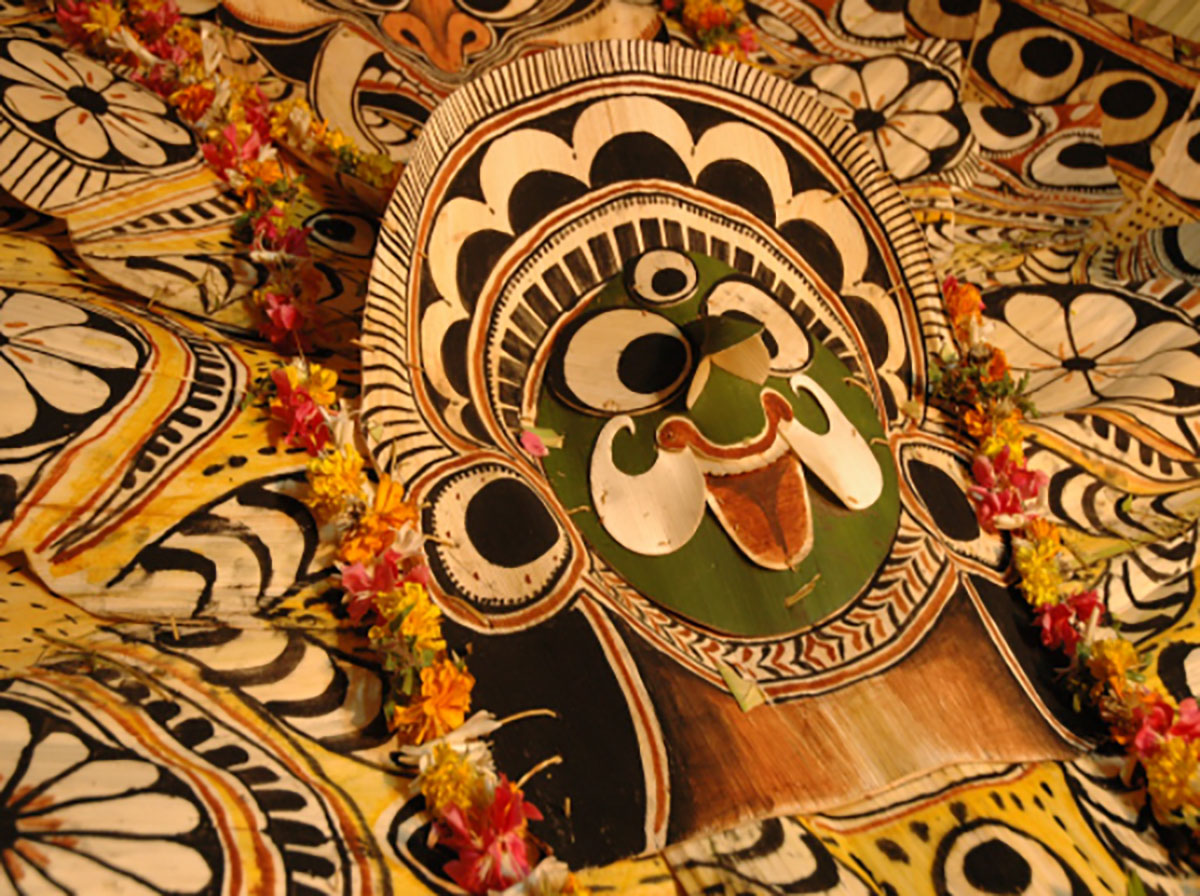ARTICLE
Padayani
Padayani may be of different kinds depending on the character represented or on the area it is being performed in. Examples of these performances include Bhairavi padayani, Yaksha padayani, Sundara padayani, Pakshi padayani, and Ganapati padayani. Three days before the festival begins, a fire is ritually lit in the temple courtyard where the performance is to take place. The fire is believed to represent Kali, and stays lit throughout the festival. This is followed by dances such as the Kudampooja Kali, wherein the dancers move around the campfire in circles; Thotakali where two rows of performers weave a piece of white cloth during the dance; and Velakali which involves the dancers carrying velapiller (small human figures) while dancing to the songs.
Today, padayani is among Kerala’s most popular performance styles. Despite its association with long temple-related festivals, some contemporary performances take place within a day. In 2010, a padayani village was established at Kadammanitta, historically a major centre of padayani performances, with museums and tourist facilities to promote the form.
Bibliography
Our website is currently undergoing maintenance and re-design, due to which we have had to take down some of our bibliographies. While these will be re-published shortly, you can request references for specific articles by writing to hellomapacademy@map-india.org.








